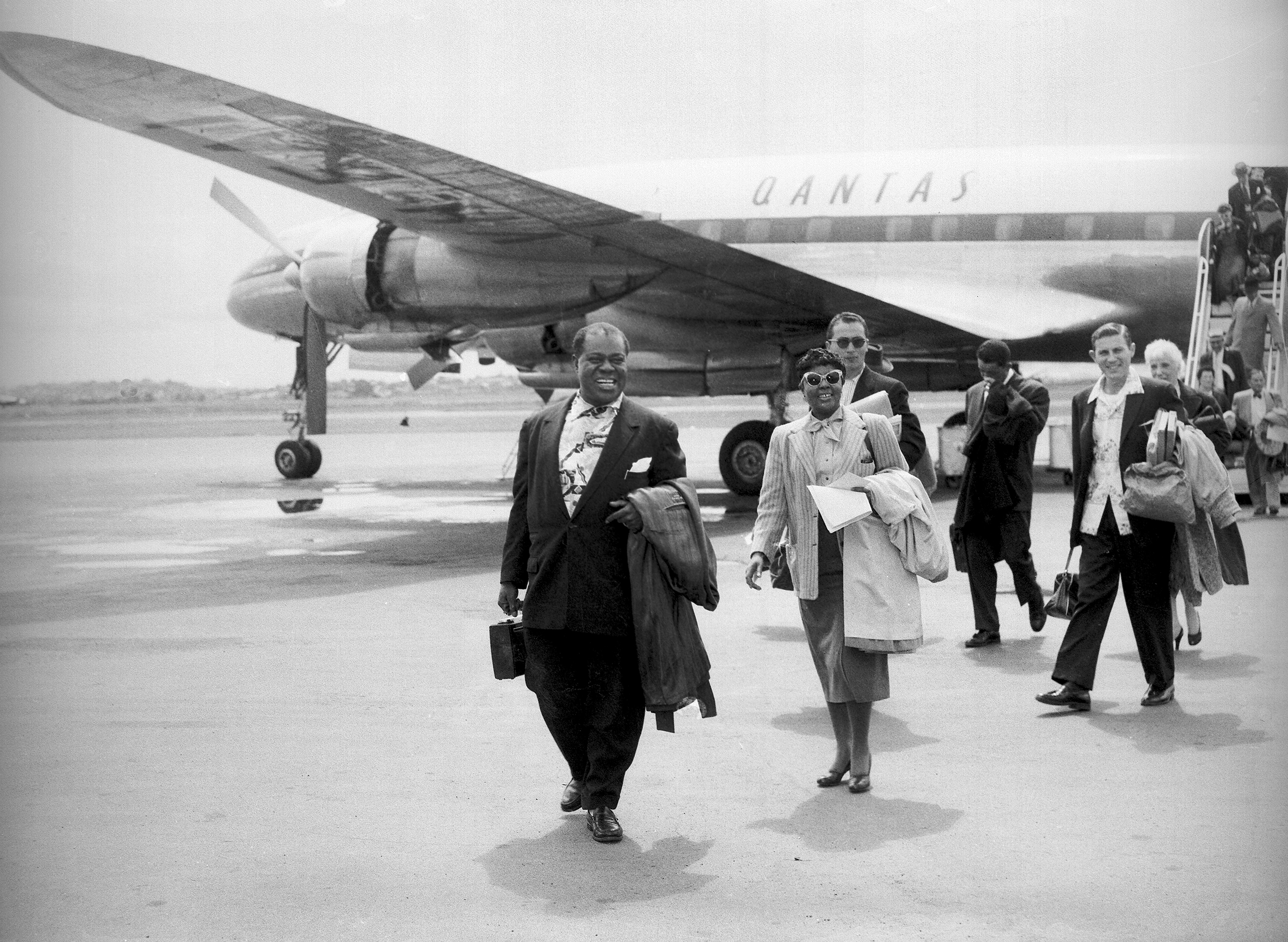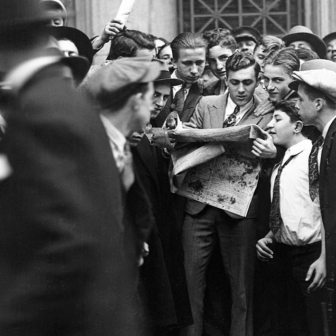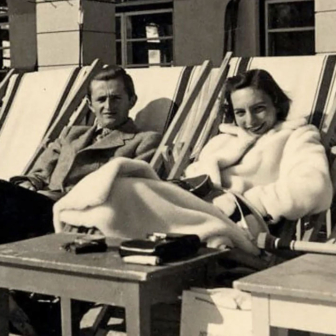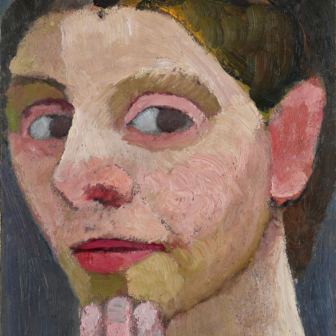It’s a niche category, I know: but who’s your favourite American visitor to Australia? My vote goes to Mark Twain, who wrote during his wildly successful 1895 speaking tour that the Australian story “does not read like history, but like the most beautiful of lies.”
Another possible answer to this burning question is supplied by the veteran rock writer Jeff Apter, who offers up for consideration an eccentric bisexual marijuana aficionado and energetic chancer with shady connections. According to Apter this “beautiful liar” did more than just about anyone to bring American popular culture to the entertainment-starved masses of early postwar Australia. Ladies and gentlemen, please put your hands together and give a big Down Under welcome to the American impresario Lee Gordon.
Gordon was a visionary showbiz grifter who first brought great artists like Ella Fitzgerald, Louis Armstrong, Frank Sinatra, Sarah Vaughan and Nat King Cole to our faraway shores. More dubiously he also introduced the roller derby, the Harlem Globetrotters, drive-in burger joints and Liberace to unsuspecting Australians. Along the way, he helped create the careers of many home-grown entertainers, including Johnny O’Keefe. He achieved all this in just a single blurred decade. Sadly — like his friend and acolyte O’Keefe — the customary showbiz lifestyle exacted its customary toll.
In the best traditions of the Twainian school of Australian history, our putative hero has two possible birthdays. He was either born in 1923 in Detroit, Michigan, as Lee Lazar Gordon, or six years earlier in 1917 in Coral Gables, Florida, as Leon Lazar Gevorshner. From the very beginning, it seems, our hero was an unreliable witness to his own life; he was, as any Australian would recognise, a protean illywhacker.
The origin story of Gordon’s mutual love affair with Australia has three main elements: a boxing bout, commercial aviation, and an Australian on holiday in Canada.
In 1953 — so the story goes — Gordon met an Australian used car salesman in Toronto who told him: “Go to Australia. Now. Business is booming.” An evidently enthused Gordon flew into Sydney on 30 September 1953 with his first wife June, four suitcases and no reputation.
He arrived before the Queen, before the Opera House was even a twinkle in Joe Cahill’s eye, before television, before we had our own flag. What he found was a hick town with enormous potential.
His method of arrival was significant. The first regular flights from America to Australia began the following year, when the national carrier started flying Lockheed Super Constellations between Sydney and San Francisco.
Without this advance in aviation, Gordon’s plans would never have got off the ground. He had to fly to the States to catch the stars, and the stars had to be able to fly here. Frank Sinatra, for one, was never going to spend three weeks traversing the Pacific Ocean on a ship.
Gordon had big plans for something he would eventually call “The Big Show.” But where — in Sydney at least — would his performers perform?
Back in 1908 the US Navy, in the form of the Great White Fleet, dropped anchor in Sydney while on a goodwill tour of the world. In response to this floating goldmine appearing in our beautiful harbour an Australian entrepreneur — a man very much after the heart of Gordon himself called Hugh Donald Macintosh — organised a heavyweight world champion bout between Canada’s Tommy Burns and Australia’s very own Bill “Boshter” Squires as a means of separating the visiting sailors from their hard-earned readies.
Squires lost the fight, but Sydney gained a new entertainment venue on the corner of Old South Head Bay Road and Nield Avenue in Rushcutters Bay when Macintosh developed the site into an arena. In 1912 a huge octagonal structure with a tin roof was added, accommodating 12,000 punters.
The Old Tin Shed, as the Sydney Stadium was duly nicknamed, became the biggest room in Sydney. In Gordon’s day it featured a revolving stage, and just about all the acts who played there hated the place. Bob Hope reportedly quipped that it was “like Texas with a roof on it.”
The Stadium soon became Gordon’s centre of operations. Every performance, he would take up his favourite position in the nose-bleed seats from where he could survey the money-making mayhem he’d unleashed. Meanwhile, deep in the stadium’s bowels, his loyal staff would be counting the moolah. In the wee small hours a trusted lieutenant would drive a Hillman ute stuffed with cardboard boxes full of cash up to the Commonwealth Bank in Martin Place where Gordon had access to a private vault. After a successful Big Show, they might stash away as much as £40,000 (or $1.7 million in today’s money). The rollercoaster had left the station.
“[Gordon’s] only interest in making money,” his loyal accountant Alan Heffernan once explained ominously, “was to experience the joy of spending it.” As his acts toured the main capital cities, Gordon made fortunes, lost them, and then managed to remake them: until his luck ran out.
Along the way he gets beaten up on a plane by Frank Sinatra’s manager. Dizzy Gillespie demands his money upfront before going on stage. He tries but fails to get Elvis to Australia. He’s hospitalised for mental illness a couple of times. He does his dough on the drive-in burger joint. He goes into partnership with Abe Saffron, Sydney’s Mr Sin. He goes into voluntary bankruptcy. And he smokes a great deal of dope and drinks a lot of brandy. Towards the end, he starts to abuse pethidine.
And then in late 1962 Gordon brings Lenny Bruce to Australia. It is a disaster for the troubled comic and his equally troubled promoter. According to Apter, “Gordon knew his time as a promoter was up and decided to stage the most outrageous swansong he could muster.”
Gordon had come a long way down from stashing boxes of cash in a private bank vault. On 6 November 1963 either Lee Lazar Gordon or Leon Lazar Gevorshner (take your pick) died of a suspected heart attack in a London hotel room. The Big Show was over for good. •
Lee Gordon Presents… How One Man Changed Australian Life Forever
By Jeff Apter | Echo Publishing | $34.99 | 272 pages




